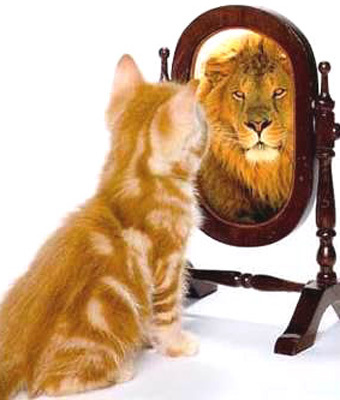


In my work as a life-coach I lead people to develop and focus their life-force so that they can get from where they are at, to where they want to be.
Getting in tune with your self and your life’s purpose is central to such achievement and success.
Getting in tune with you self and your life’s purpose is a matter of harmonization – of vision, goals, plans and action and of head, heart and circumstances.
To ‘sing one’s song’ is a metaphor for finding and staying tuned with your life’s purpose.
Harmonization is also a matter of getting in touch with our inner wisdom. Chinese wisdom places great emphasis on harmony. Inner and outer harmony are both important.
Outer harmony depends on inner harmony.
Inner harmony depends on being, doing and having in relation to our life purpose – i.e. getting alignment.
We need to get alignment between head and heart, and between the activities of our inner and outer lives. Then we get ‘flow’ – when we are able to function in energized harmony – like an athlete ‘in the zone’.
Episodes of silence are vital.
If we are in a situation we don’t see as getting us toward our dream then ‘see it differently’ – that is see it as a stepping stone, as opposed to a mill-stone!
Decide on your life’s purpose – don’t worry it will evolve via experience – and further reflection.
Locating, tuning and singing your ‘song’ also requires a sufficiency of silence and experiences of living in the now – see my Eckhart Tolle articles and better still read and listen to Eckhart Tolle.
Just DECIDE and START! (‘Ready. Fire. Aim!)
Set your goals – and work your goals day by day. How? – here’s one way great way.
For every day draw 4 circles.
1st circle = My Lifelong Dream,
2nd circle = My Year,
3rd circle = My month,
4th circle = My day.
Keep the 4 circles of your personal universe in harmony via working to your daily goal-setting.
The ‘universe’ as Wayne Dyer reminds us means ‘one song’.
Live your life singing your single, harmonised, song and you will succeed.
Harmony here is what enables us to be focused, and motivated.
Plan and work every day to achieve toward your monthly goals – etc.
Periodically adjust them all according to each other, so you have the motivation of always operating in a single, harmonized universe.
Keep the dream sharply visualized.
Don’t be afraid of adjustments – think of life as a ship’s journey – course corrections are inevitable and necessary.
Occasionally remind yourself of these two quotations;
1 “If you don’t think about the future, you won’t have one.” Henry Ford
2 “The future enters into us, in order to transform itself in us, long before it happens.” – Rainer Maria Rilke
Rainer Maria Rilke’s statement takes us even deeper by telling us that we create our future by what we are.
Balance doing, knowing and having with being. The current master of ‘being’ is – Eckhart Tolle.
If you don’t plan your journey don’t be surprised if you end up somewhere you don’t want to be!
Have fun singing your song – literally as well as metaphorically.
Keep the dream – even if a ‘credit crunch’ means you have to do stuff that is a temporary delay.
Sometimes just surviving is the biggest step you can make that particular day – but that day in the future will be seen as being just as important – because you didn’t give up!
Survival is sometimes progress.
Sometimes survival is the best singing of your song possible on that particular day. It’s still worth celebrating – you can’t sing at your own wake!
—–0—–
I once used What’ll we do with a drunken sailor as a class song but be careful, a full rendition of all verses would remove all desire to go on living! Others might be shocked as to how brutal was the British Navy of that time.
What’ll we do with a drunken sailor,
What’ll we do with a drunken sailor,
What’ll we do with a drunken sailor,
Earl-aye in the morning?
Chorus:
Way hay and up she rises
Patent blocks o’ diff’rent sizes,
Way hay and up she rises
Earl-aye in the morning
1. Sling him in the long boat till he’s sober,
2. Keep him there and make ‘im bale ‘er.
3. Pull out the plug and wet him all over,
4. Take ‘im and shake ‘im, try an’ wake ‘im.
5. Trice him up in a runnin’ bowline.
6. Give ‘im a taste of the bosun’s rope-end.
7. Give ‘im a dose of salt and water.
8. Stick on ‘is back a mustard plaster.
9. Shave his belly with a rusty razor.
10. Send him up the crow’s nest till he falls down,
11. Tie him to the taffrail when she’s yardarm under,
12. Put him in the scuppers with a hose-pipe on him.
13. Soak ‘im in oil till he sprouts flippers.
14. Put him in the guard room till he’s sober.
15. Put him in bed with the captain’s daughter*).
16. Take the Baby and call it Bo’sun.
17. Turn him over and drive him windward.
18. Put him in the scuffs until the horse bites on him.
19. Heave him by the leg and with a rung console him.
20. That’s what we’ll do with the drunken sailor. Source
You won’t believe the background to this song see WikiPedia HERE
—–0—–
NB This article was inspired by Steve Chandler’s brilliant ‘100 Ways to Motivate Yourself’, one of my Top 10 Personal Development texts.






